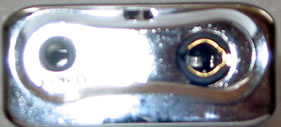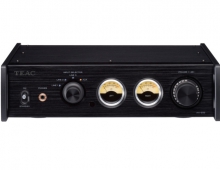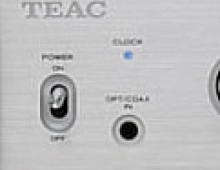Teac MP-200 MP3 Player
3. Tests - Page 1
Tests - 1
The Teac MP-200 MP3 Player stores the audio/data files in its built-in flash memory. The sample that arrived in our labs had a capacity of 256MB, but there are also a 512MB and 1GB models available. While 256MB might appear small to many of you, you can easily store around 6-7 hours of music (128Kbps MP3 format). The capacity depends on the bitrate of the stored music. The greater the bitrate (and hence quality) of the mp3 files you store, the less playback time that will be available. But if you feel you have a greater need for storage space, you can go for the larger capacity models. Apart from the differences in storage capacity, in all other respects, all the models in the series are identical. Bear in mind though, that this device can playback music files encoded with the MP3 and WMA format.
The main advantage of players that use flash memory instead of a CD-ROM reader is that they produce flawless playback, without skips. Since the player does not have any moving mechanical parts (like the optical pickup of a CDROM reader), it is not affected by vibrations or shock from sudden movements and hence, there is no need for skip protection mechanisms. Playback is smooth, and skipping between tracks is almost instantaneous. So, you can use the player without annoying skips while jogging or while performing any activity that requires rapid movements.
There is another advantage as well, that stems from the lack of mechanical
parts. Power consumption is much less than a CDROM reader based player. This
is the case with the Teac MP-200 MP3 Player as well. It operates on a single
AAA size battery, which will give you many hours of playback time. In our tests,
we managed to get a little more than 10 hours of continuous playback.
The Teac MP-200 MP3 Player is primarily controlled through a pair of
two
way buttons, located on the lengthwise lower side of the device (see photos
below) and
a
two
way
button
next
to the display that can be used to turn the
device
on or off, play/pause as well as record. All the MP-200's
functions are controlled with these three buttons. The 85-page user manual
that
is
included
(in the German/English/French
languages),
will help you configure and use the device
without too much hassle.


Looking at the photos above, on the top photo we can see (from left to right) the power on/off switch, and the display. This two-way switch is used to start/stop/pause playback, control recording, A-B repeat. The LCD screen is quite impressive for a device of this size. The device's LCD screen is readable under low light conditions, and it can display two colors (light blue, yellow). The information displayed during playback is the file's ID3 tag/file name, playback time, along with volume level.
The lower photo show the buttons located on the side, where we can see (from left to right) the VOL/SEARCH FF/RW button, and the MENU and EQ/DEL button. The skip forward/backwards buttons also serve as volume up/down buttons when pressed for more than 1 second.


The pair of photos above, show the inputs/outputs to the device. Located on the the left and right extremes of this rectangular shaped device, there are the USB connection, and the earphone jack and the line-in input jack, respectively. The USB interface connection is quite small and unfortunately unprotected. So extra care must be taken to avoid dust or anything else getting in there. The USB connection is the only way to exchange files with a computer making the need for a USB cable imperative.





















